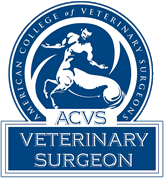Anesthesia in dogs and cats
Is anesthesia necessary?
Anesthesia is the removal of sensation or pain through the administration of medications under close monitoring. For all but the most minor procedures, some form of anesthesia is necessary to prevent pain and to minimize patient anxiety. This is true in human as well as in veterinary medicine.
This anesthesia may be either local or general anesthesia. Local anesthesia involves administering medications such as sodium channel blockers (e.g., lidocaine, bupivicaine, or novacaine), narcotics (e.g., morphine), and/or alpha-2 agonists (e.g., dexdetomidine) to block pain sensation to a certain area of the body without altering consciousness. The area may be small and localized, such as the region around a small skin mass prior to a biopsy or surgical removal. Or the area may be more generalized, such as the entire lower half of a patient following an epidural (spinal anesthesia).
General anesthesia involves inducing unconsciousness to provide complete muscle relaxation and prevent any discomfort. Most major procedures in veterinary medicine require general anesthesia because our patients will not remain still enough to allow surgery with local anesthesia.
Is anesthesia safe?
While it is true that anesthesia can pose risks to animals, just as it does to humans, these risks are extremely low and can be further minimized by taking every precaution. While under general anesthesia, animals are closely monitored to determine their depth of anesthesia and to ensure complete comfort. We monitor the major vital signs (heart rate, pulse, respiratory rate and character), mucous membrane (gum) color and refill time, blood pressure, electrocardiogram (ECG) tracings, end-tidal carbon dioxide levels, body temperature, and patient parameters such as eye position and muscle relaxation.
I recommend…
I recommend that all animals, no matter how young or healthy, have pre-anesthetic blood work screenings. These simple blood tests can pick up many conditions that can impact how an animal will handle anesthesia.
Proper pain medications and anesthetic protocols are paramount to a good success.
I have anesthetized thousands of animals and have extensive experience on tailoring proper anesthetic techniques to individual patients. In addition, your pet will be continuously monitored by Amy, a licensed veterinary technician.
She has been a technician for as long as I have been a veterinarian and has extensive experience with anesthesia administration and monitoring.
